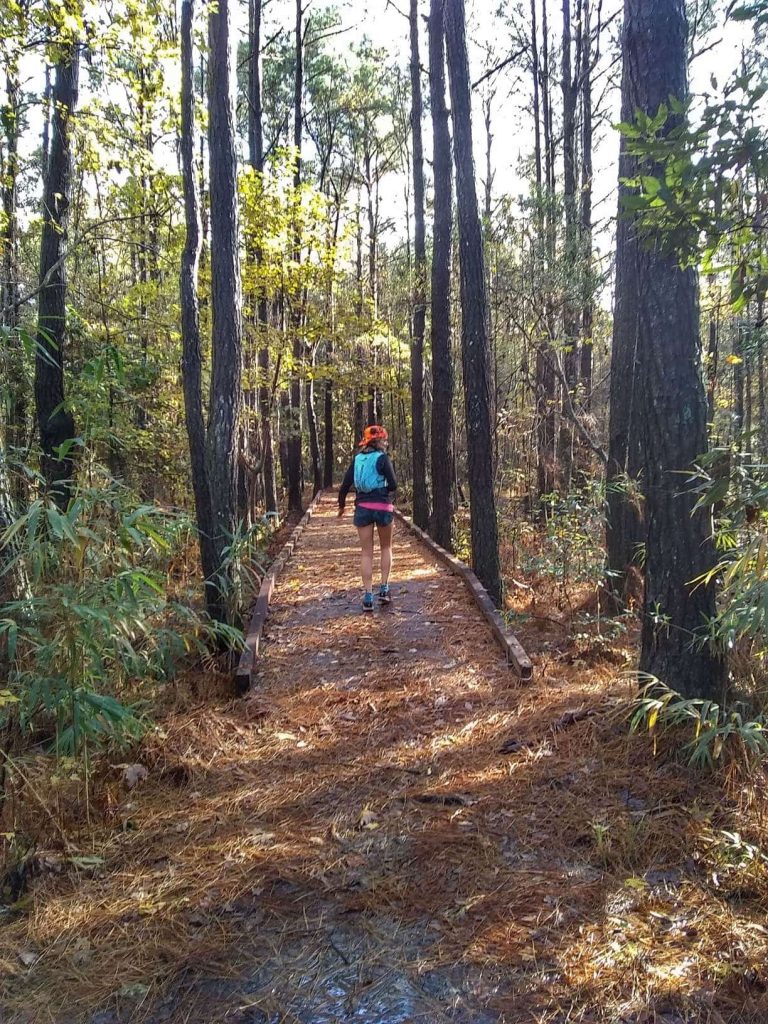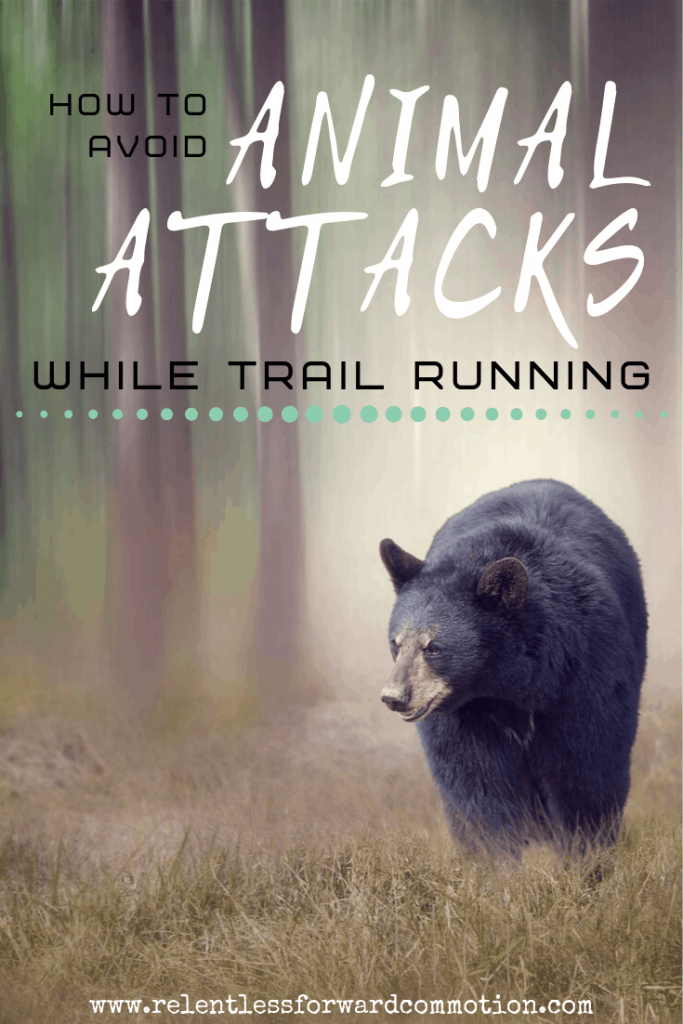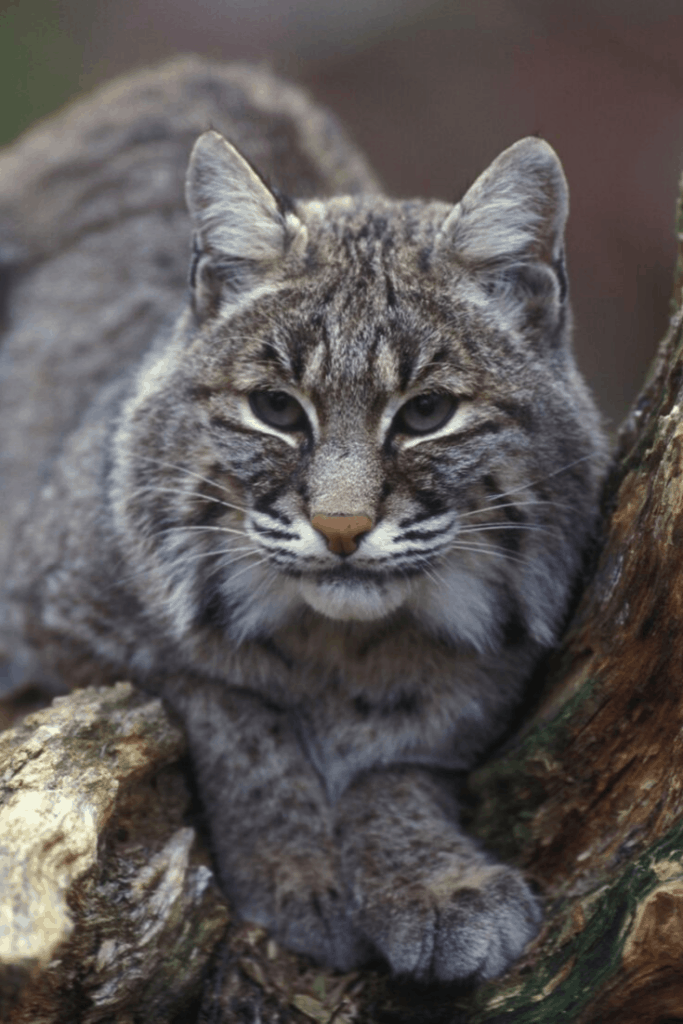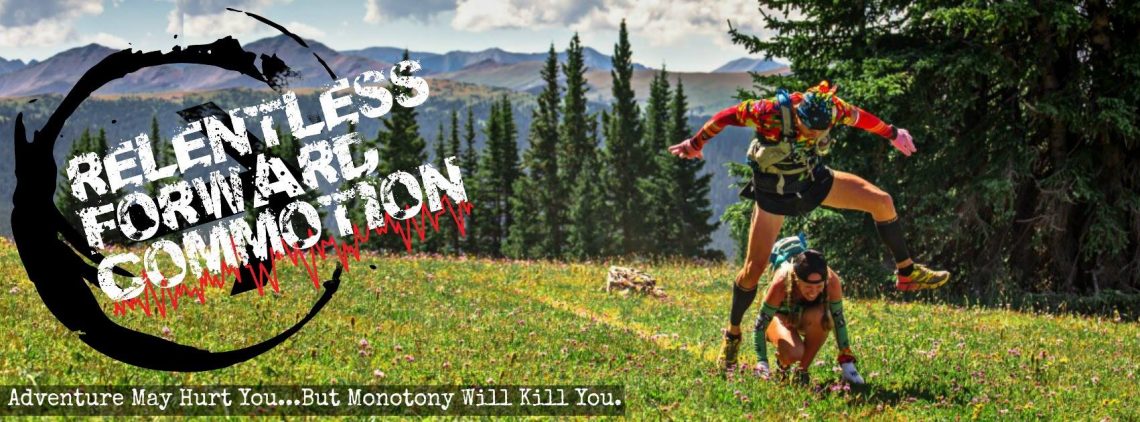Last Updated on January 30, 2022 by Heather Hart, ACSM EP, CSCS
It makes perfect sense why people would be apprehensive of wild animal attacks while trail running: the forests (and deserts, and plains, and other places trails naturally occur) are homes to wild animals. Further, while they are relatively rare, when wild animal attacks DO happen to runners, the stories are sensationalized and shared endlessly among the community.
How many times did we see the articles about the runner who choked the mountain lion to death? Or how about the woman who was attacked by a bear in the middle of a marathon? It’s no wonder these fears reside in the back of the minds of trail runners.

The truth is, we are exposed to a number of dangers every time we head out on the trails. The biggest risk, in my opinion, is injury from falling on rocks/roots/uneven terrain. Coincidentally, I’m writing this post while healing a sprained ankle…from falling on trail. The second greatest risk, perhaps, is getting lost or weather exposure…or a combination of both. Lower on the list of dangers is the risk of encounters with wild animals. And although they are very rare, attacks from animals such as bears, mountain lions, and coyotes are not completely unheard of. Unfortunately, animal attacks on trail runners have been deadly.
How to Avoid Wild Animal Attacks While Trail Running:
I’ll be the first to tell you that you shouldn’t let the fear of wild animal attacks keep you from hitting the trails. I also do not want to vilify wild animals: the forest (desert, etc.) is their home, we are the intruding visitors. But, because animal attacks do (rarely) happen, the best thing you can do lessen the potential danger is educate yourself. Here are a number of precautions to take, and tips fort what to do if you encounter a wild animal on trail :

Avoid areas where aggressive animals frequent.
It seems like common sense, but I’m going to say it anyway. If you know of an area where aggressive animals live, or if you’ve heard of a trail that’s had a ton of dangerous wildlife sightings: don’t run there. For example, if it’s spring and you’ve heard a mother bear and her cubs are frequenting a certain section of your favorite trail, avoid running there during cub season.
Be Aware of Your Surroundings
The truth is, most animals want to avoid you just as much as you want to avoid them. That said, some wildlife will potentially attack if they are startled and/or feel threatened (or, they perceive their offspring are threatened). If you are completely zoned out with your headphones on and music blaring in your ears, you may miss obvious signs and sounds that an animal is near by.
Do Not Approach a Wild Animal
So, you’re running along and there it is: a bear/coyote/cougar/insert potentially dangerous animal here. Hopefully you’ve been aware of your surroundings enough to spot the animal from a safe distance. Staying as far away as possible may limit the potential for an attack. In other words, do not approach the animal for an awesome Instagram photo. Remember: even non predators (like a moose) can be aggressive if they feel threatened. Retreat slowly, if you can, and keep your eyes on the animal while you do so. If you must continue on your path, slow down and give the animal time to leave the area.

Be Cognizant of Running with Dogs in Bear & Cat Country
While your dog may be well behaved, it could still be perceived as a threat by a wild animal – especially protective mothers. “Wildlife is the #1 reason we have rules about where dogs can go and when they need to be on leash.” says Jim Dees, Outdoor Educational Coordinator for the U.S. Forest Service. “Dog-wildlife encounters can go badly – for both the wildlife and the dog. We spotted a mama bear here last month with FOUR cubs – very unusual! The odds of all four surviving an encounter are slim. And Mama would not react well to a dog running through!”
What to Do if a Wild Animal Approaches You:
Do Not Panic.
Let’s be real: who wouldn’t panic if they were suddenly staring down a mountain lion? I know I would. But, you have to try to keep as calm as possible.The saying that “animals can sense fear” is absolutely true. Panicking can let the animal know that you are vulnerable, and may provoke an attack. Stay as calm as possible.
Don’t Run.
Instinct kicks in, adrenaline courses through your body, and every ounce of your being is screaming “RUN!” But…don’t. If an animal does approach you, don’t run unless you are absolutely certain you can reach a safe spot immediately. The reality is, you won’t be able to outrun a dog, bear, mountain lion, etc. Instead, running will trigger the animal’s instinct to attack.

Be Tall, Loud, and Boring.
When it comes to dogs, experts agree that standing very still and acting “boring” will cause the dog to lose interest. Waving or throwing items may instigate an attack.
When it comes to bears and other wild animals, identify yourself as a human by standing tall and talking calmly. Your voice must be firm, calm, and loud; any shrieking or sounds of fear can be sensed by the animal and may trigger an attack response.
If the wild animal acts aggressively, use a loud, firm voice, and throw rocks or sticks at it to try to scare it away, especially in the case of bears or mountain lions.
What to Do if a Wild Animal Attack Happens:
If you are attacked by a domestic dog, try your best to cover your head and face to prevent soft tissue damage. Hopefully the dog will lose interest and may retreat.
If you are attacked by a bear, mountain lion, wolf, alligator or any other wild animal, fight back with any possible method. In all instances, a product like mace, pepper spray, or bear spray may help ward off the animal. Continue to yell loudly and firmly for help.
Bottom line: we should never let the fear of what “could” happen prevent us from enjoying the trails. Wild animal attacks are indeed rare. But it is important to remember that wild animals are just that – wild. By respecting this fact, and respecting the boundaries of these animals, you can help minimize your risk of wild animal attacks while trail running.
Heather Hart is an ACSM certified Exercise Physiologist, NSCA Certified Strength and Conditioning Specialist (CSCS), UESCA certified Ultrarunning Coach, RRCA certified Running Coach, co-founder of Hart Strength and Endurance Coaching, and creator of this site, Relentless Forward Commotion. She is a mom of two teen boys, and has been running and racing distances of 5K to 100+ miles for over a decade. Heather has been writing and encouraging others to find a love for fitness and movement since 2009.

Cory McNair
I live in an area where my yard (yes, my yard) and extended property is a thru-way for turkey, deer, grey foxes, coyotes, bobcats, and mountain lions.
In order of likelihood of being attacked by said animals:
1) Turkeys. They are mean, and around me all the time. I may die of laughter as they attempt to edge me off their territory (which is my hammock area). My two year old loves to chase them and his high pitches squeals seem to be the perfect anti-turkey weapon. That being said, I still respect their velociraptor roots and know they could do real damage if it came down to it.
2) Deer, or at least in certain times of year, as bucks can be quite nasty in rut.
3) Coyotes. They can be a menace, will work alone or in groups, and can be incredibly aggressive when in packs. I’m not really fearful of them for some reason, unless my dogs are out.
4) Mountain lions–they are very averse to human interaction, but frankly I am freaked out by them. I mean, they can carry a full grown mule deer into the upper branches of a tree. I am scared shitless of taking my trash to the curb at night, much less running night/pre-dawn from my house into my neighborhood. They are the Great White Sharks of the mountains. Their legend ourshines their actual kill ratio of humans.
5) bobcats & foxes. Honestly, you would have to poke them with a stick or they would have to be rabid for them to attack you. It doesn’t mean it won’t be bad if it happens, but I just don’t have the same level of fear as I do for Mountain Lions.
Heather
One of my biggest “feared” wild animals are gooses and swans. SO. ORNERY. And not afraid to chase and bite!
Deborah Brooks
We don’t have these types of animals where I run. We do encounter lots of deer which dont’ bother me while running but do scare me when I am on my bike. Great tips!
Madhusree Basu
Being mostly a city runner, my trails are limited to only small patches we call ‘Mini Forests’ which are also inside city…nothing like the trails you described…but they are frequented by monkeys…they are notorious in snatching and slapping if you put up a little of resistance also…
kookyrunner
I don’t run on the trials near me so I really only see birds and squirrels on my runs, but one time I did see a family of deer!
Never Too Old to Lift
Being from the UK I don’t have to worry about this. It’s crazy that you even need to consider wild animals when going out on a run.
Heather
REALLY? No animals at all? I can’t even imagine!
Sandra D Laflamme
I could have used these tips last year when I encountered a bear with my dog! I amazingly kept a cool head and let my dog go . . . the bear chased him and not me. Thankfully we were both ok.
Christine Parizo
These are all really good tips! Although honestly I really am more afraid of spraining an ankle on a rock or tree root.
Kim at Running on the Fly
Yikes, I don’t think of wild life much in Iowa, though I know it’s out there. I think the biggest thing is to respect the animals ( as you said, it’s their turf), and keep your distance.
runswithpugs
It’s so funny to me how region plays a role. I read the title of this post and immediately broke into a sweat. OMG Wild Animals! Will someone think of the children! Then i take a minute and have to remember that I swim in the Atlantic where great white sharks and bull sharks are known to hang out, and my son and i rode our bikes past the gator just chilling in our neighborhood pond LOL.
We also have wild boar, bobcats and the formidable Florida panther, but I don’t hear too much about them coming in contact with humans.
These are all great tips. Unfortunately, I am fairly sure that after my initial panic, I would immediately revert to “So fluffy so cute!” and that’s how it would end for me.
Jackie
I run on a wooded trail in the middle of a suburban area almost every day. I’ve seen deer, fox, coyotes, skunks, geese and a mama raccoon with her babies. That scared me the most! I was with my dog and she was very interested in what was climbing that tree. All I could think if was the mama taking a swipe at my dog’s nose and causing a serious injury. A sharp reprimand to my dog and we were (carefully) on our way. And the skunks! I always worry about encountering a rabid skunk! In the spring and fall in the predawn, I can smell them and worry my entire run.
Esther
These are great suggestions!
Thankfully the only animals I have come across in my running days are snakes and deer!
Farrah
I don’t do any trail running, but I do a lot of hiking, and was vaguely worried about this while I was on my 2.5 month road trip over the summer! These are all really great tips!
KeepTheDistance
The best way to avoid wild animal encounters is to stay out of their way.
Heather Hart, ACSM EP
Of course. But when you’re out on a trail designed for running/hiking/mountain biking and you happen to cross paths with an animal…knowing how to react in order to keep BOTH of you safe is important.